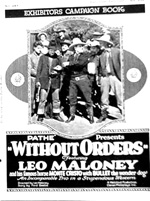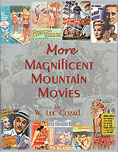


the West-End
of the
San Bernardino Mountains from Crestline
to
Running
Springs
The
rich variety of natural resources in the San Bernardino Mountains attracted
prehistoric Native Americans to the area for food, water, and seasonal
shelter. Today, our mountains are the most heavily "urbanized"
mountains in the United States with a deep and rich history. They provide
an immensely attractive location for full-time residents and seasonal
recreation for visitors from throughout Southern California.
In 1776, Spanish missionary Father Garces passed through Sawpit and
Devils Canyons. Other explorers including Kit Carson and Jedediah Strong
Smith soon followed. During the Rancho period, the mountains were "harvested"
on a part-time basis by fur trappers, and by Spanish landowners seeking
the immense stands of virgin timber.
The Mormon settlement of San Bernardino brought roads replacing Indian
trails into the mountains. Sawmills subsequently provided much of the
lumber used to construct early Los Angeles.
Shortly before the turn of the century the first west-end mountain resorts
were established. Real estate development soon followed, and by the
1920s most of our mountain communities had been settled. Improved roads
and the development of year-round opportunities for business, leisure,
and residence have served to create the area we know today.
Life
in the 1500's
On rare occasions,
people could obtain pork and would feel really special. When company
came over, they would bring out some bacon and hang it up to show it
off. It was a sign of wealth and that the man “could bring home
the bacon”. They would cut off a little to share with guests and
would all sit around and “chew the fat”.
Movies
in the Mountains
The
fledgling Moving Picture business came early to our local mountains.
The public's thirst for adventure films was appeased by tales of the
great southwest in the form of the "western". Los Angeles
had already become a mecca for the budding industry by 1909. The San
Bernardino mountains beckoned the early film makers with the promises
of tall timber and grassy meadows. Location shooting was easy because
hunting and fishing lodges were already available to house the film
crews. Although films were probably already being made in the mountains,
the earliest documentation was an item in the Redlands Daily review,
January 19, 1913, indicating that the Selig Bear Valley Co. was in our
mountains filming "The Cattle Rustlers". Unfortunately, like
so many other early films, this film is "lost" to us.
 1913
is also important to our mountain communities because it was the year
that Cecil B. DeMille came up to Pinecrest Lodge with a group of actors
to film his famous moving picture "The Squaw Man". This film
was considered one of the first to start a trend toward longer films
with quality writing and first class actors. DeMille returned to our
mountains several more times in the ensuing years with many famous silent
stars in including Gloria Swanson.
1913
is also important to our mountain communities because it was the year
that Cecil B. DeMille came up to Pinecrest Lodge with a group of actors
to film his famous moving picture "The Squaw Man". This film
was considered one of the first to start a trend toward longer films
with quality writing and first class actors. DeMille returned to our
mountains several more times in the ensuing years with many famous silent
stars in including Gloria Swanson.
Our mountains have lent themselves to the western genre of film as well as many a "Mountie" picture. The golden age for film making in the mountains was during the Twenties and Thirties. One old timer recalls that "there were so many companies up here shooting pictures that they were practically tripping over one another." Many famous films were shot on location in our mountain communities and continue to be made to this day.

